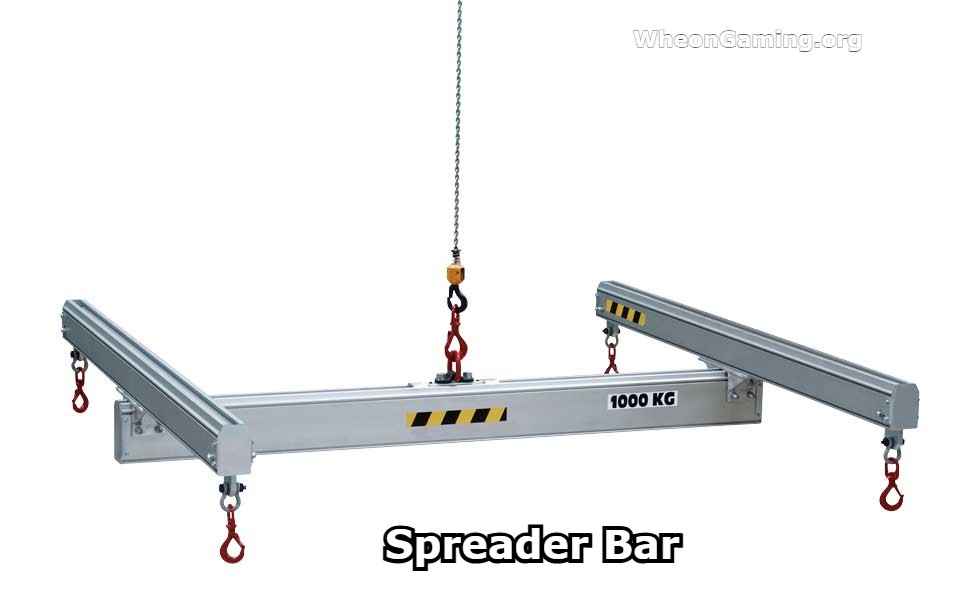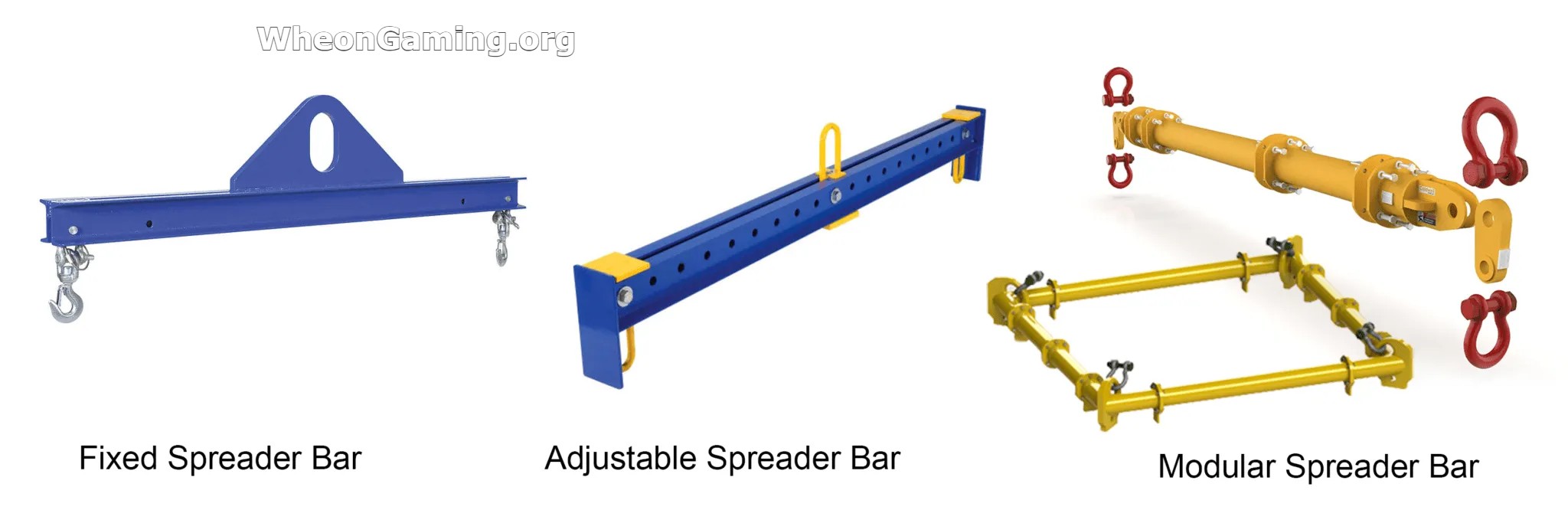Introduction
In many industries where heavy lifting is a regular task, like construction, manufacturing, shipping, and offshore work, safety and balance are top priorities. One of the most important tools that help with this is the spreader bar. A spreader bar is a device used to lift large or heavy loads by spreading the lifting points apart. This tool helps reduce stress on the load and lifting slings, making it easier and safer to move large items using cranes, hoists, or other lifting equipment. Whether you’re new to heavy lifting or looking to upgrade your rigging setup, understanding the role and types of spreader bars can help you make smarter, safer choices.
What Is a Spreader Bar?

A spreader bar is a lifting device designed to distribute the weight of a load over multiple points. It’s typically a straight bar, placed between two or more lifting slings, that connects to the crane or hoist. This helps to keep the lifting slings at an angle, reducing pressure and preventing the load from becoming unstable. Unlike a lifting beam that lifts with bending stress, a spreader bar works under compression and uses tension on the slings to spread the load.
Types of Spreader Bars
There are several types of spreader bars, each built for specific uses:
-
Fixed Spreader Bar: Has a set length and is used for loads with consistent sizes.
-
Adjustable Spreader Bar: Can change its length to suit various load widths.
-
Telescoping Spreader Bar: Extends or retracts to different lengths like a telescope.
-
Modular Spreader Bar: Made from multiple pieces that can be assembled in different ways for flexibility and transportability.
Choosing the right type depends on the job and the kind of loads you need to lift.
Common Uses for Spreader Bars
Spreader bars are used in many industries:
-
Construction: To lift beams, pipes, or concrete slabs.
-
Shipping: For moving containers and heavy cargo.
-
Oil & Gas: To lift equipment on rigs or offshore platforms.
-
Boat Handling: Lifting watercraft safely without damage.
Wherever balance and safety matter during a lift, a spreader bar is a must.
Spreader Bar for Crane Lifting
When using cranes, spreader bars help keep the load balanced. They stop slings from pinching the load inward, which is important when handling fragile or wide items. The bar connects to the crane hook at the top and spreads the slings out at the bottom. This makes lifting large equipment or materials smoother and safer.
Benefits of Using a Spreader Bar
Using a spreader bar brings several advantages:
-
Improved Load Stability: Prevents swinging or shifting.
-
Better Weight Distribution: Reduces strain on lifting points.
-
Protection for the Load: Prevents crushing or damage.
-
Enhanced Safety: Minimizes the risk of accidents or dropped loads.
These benefits make spreader bars essential for safe and efficient rigging.
Spreader Bar vs. Lifting Beam
Although they look similar, a spreader bar and a lifting beam work differently. A lifting beam carries the load by holding it from below or at specific lifting points, often bending slightly under the weight. A spreader bar, however, works in compression, spreading lifting slings outward and lifting from above. Both have their uses, but spreader bars are better for reducing stress on the slings and keeping wide loads stable.
Adjustable and Telescoping Spreader Bars
If you’re working with loads of different sizes, an adjustable spreader bar is a great option. You can set it to different lengths, making it more versatile than a fixed bar. A telescoping spreader bar works similarly, but it extends and collapses like a telescope, which is useful for limited storage or quick changes between lifts.
Modular Spreader Bars for Heavy Lifts
For big industrial jobs, modular spreader bars are often the best choice. These are made from multiple parts that you can bolt together to form different lengths and configurations. They are strong enough for very heavy loads and are easy to transport because they come in smaller pieces.
Spreader Bar in Rigging Systems
In rigging, a spreader bar is crucial when you want to avoid sling angles that are too tight. Tight angles create more force on the load and lifting points, increasing the risk of failure. A spreader bar allows the slings to hang at safer angles, keeping the load stable and reducing stress.
Boat Lifting Spreader Bars

Lifting boats requires extra care because of their size and structure. A spreader bar for boats supports the hull properly by spreading the lifting points. This prevents damage to the boat during transport or maintenance. Special boat lifting spreader bars are often padded and shaped to fit the boat’s contour.
Choosing the Right Spreader Bar
To pick the right spreader bar, consider:
-
Weight of the Load: Never exceed the bar’s rated capacity.
-
Length Requirements: Match the bar to the width of the load.
-
Type of Lifting: Fixed, adjustable, or modular.
-
Rigging Setup: Ensure it fits your crane, hoist, or rigging gear.
Always follow manufacturer guidelines and check certifications.
Safety Tips for Using a Spreader Bar
Safety is key when using a spreader bar. Here are some basic tips:
-
Inspect Before Use: Check for cracks, bent parts, or worn welds.
-
Use Proper Slings and Shackles: They should match the load and the bar’s specs.
-
Follow Load Ratings: Never exceed the Working Load Limit (WLL).
-
Lift Evenly: Make sure the load is centered and balanced.
Proper training and regular maintenance are essential for safe lifting operations.
Where to Buy a Spreader Bar
You can buy spreader bars from rigging supply companies, industrial equipment dealers, or online stores. Brands like Modulift, Caldwell, and Peerless offer high-quality bars for different industries. Many vendors also provide custom-made solutions or rental options for temporary jobs.
Spreader Bars in Custom Applications
Some jobs need specially designed spreader bars. These might have adjustable end fittings, multiple lift points, or extra-long lengths. Engineers can help design custom bars for unusual shapes or hefty loads. These are common in aerospace, wind energy, and marine industries.
Conclusion
The spreader bar is a simple yet powerful lifting tool. It improves safety, protects your load, and ensures better balance during lifts. Whether you work in construction, shipping, or heavy machinery, using the right spreader bar can make a big difference. Always select the correct type, inspect it thoroughly before use, and follow all safety rules. Doing so will keep your operations smooth and risk-free.
